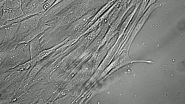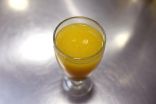An unholy alliance -- Colon cancer cells in situ co-opt fibroblasts in surrounding tissue to break out
2014-12-05
(Press-News.org) It means cancer "in place" but a carcinoma "in situ" often does not want to keep its place. Standing between a cancer cell in situ and the surrounding tissue of fibroblasts and extracellular matrix is the basement membrane, a thin sheet of fibers that normally cradles the cells above it. The basement membrane is also the frontline physical barrier that keeps primary tumors from spreading into the matrix below. Perforating the basement membrane is a cancer cell's first move toward invasion, but how? Fibroblasts are most commonly found in connective tissue that synthesizes extracellular matrix and another main structural protein of animals, collagen. But there are also carcinoma-associated fibroblasts (CAF) whose matrix proteinases could come in handy in breaking the membrane barrier. The question becomes who is invading whom--do cancer cells invade the basement membrane or do some fibroblasts help invading cancers? Researchers at the Institut Curie in Paris now say that they have evidence of a coordinated attack on the basement membrane by cancer cells in situ and CAF cells in the extracellular matrix that begins long before the actual translocation of cancer cells. The work will be presented at the ASCB/IFCB meeting in Philadelphia.
Using human colon cancer cells and primary human fibroblasts isolated from tumors and adjacent normal tissues, Alexandros Glentis and colleagues at the Institut Curie addressed the question of whether the cancer cells or the CAF cells were responsible for the breakdown of the basement membrane that leads to cancer progression. They compared CAFs from colon tumors to normal fibroblasts (NAFs) that were isolated from the same patient, in the adjacent normal tissue. A combination of markers was used to discriminate fibroblasts from other cell types to validate the purity of isolated cells and to discriminate NAFs from CAFs. In co-culture experiments on coated transfilters, both NAFs and CAFs induced migration and invasion of HT29, which are intrinsically noninvasive colon cancer cells.
The researchers then devised an assay that deployed native basement membrane to separate cancer cells on one side and fibroblasts embedded in collagen on the other. They found that only CAFs were able to stimulate invasion of cancer cells. Further study applying proteomic analysis confirmed that CAFs secrete more proteases, extracellular matrix proteins, and proteins that modify the basement membrane compared with NAFs, pointing to a remodeling role for CAFs in invasion.
Through imaging the tumors and fibroblasts, the researchers then found the smoking gun of cancer-CAF cooperation--long protrusions like puppet-strings that the tumor cells used to communicate with the fibroblasts well before the cancer cells moved to breach the basement membrane. The researchers are currently testing a role of CAF-derived molecules in basement membrane remodeling to further dissect the secret alliance between cancer cells and CAFs in basement membrane invasion.
INFORMATION:
A. Glentis1, V. Gurchenkov1, M. Schoumacher1, F. Zaccarini2, P. Mariani3, D. Vignjevic4;, 1Institut Curie, Paris, France, 2AP-HP Hopitaux de Paris, Paris, France, 3Hopital Curie, Paris, France, 4Inst Curie, Paris, France
Contact: Alexandros Glentis, alexandre.glentis@curie.fr
8120 Woodmont Avenue, Suite 750 Bethesda, MD 20814
301.347.9300 http://www.ascb.org
Author presents twice:
Minisymposium 22: Mechanotransduction of Disease
Wednesday, December 10
Time: 8:55 am to 9:15 am, Room 118C
Poster Session : Tumor Invasion and Metastasis 1
Sunday, December 7
Board 385
Poster 254
Time: 12:00 to 1:30 pm
Media Contacts:
John Fleischman
jfleischman@ascb.org
513.706-0212 (mobile)
Carol Blymire
carol@carolblymire.com
301.332.8090 (mobile)
ELSE PRESS RELEASES FROM THIS DATE:
2014-12-05
In the human brain, the BBB is not the Better Business Bureau but the blood brain barrier and the BBB is serious business in human physiology. The human BBB separates circulating blood from the central nervous system, thus protecting the brain from many infections and toxins. But the BBB also blocks the passage of many potentially useful drugs to the brain and it has long stymied scientists who want to learn more about this vital tissue because of the lack of realistic non-human lab models. Even less is known about the BBB in children. There are significant structural and ...
2014-12-05
VIDEO:
This 19-second time lapse video shows the first six hours of neuronal conversion of skin fibroblasts from a patient with Alzheimer's disease.
Click here for more information.
The search for a living laboratory model of human neurons in the grip of Alzheimer's disease (AD)--the so-called "Alzheimer's in a dish"--has a new candidate. In work presented at the ASCB/IFCB meeting in Philadelphia, Håkan Toresson and colleagues at Lund University in Sweden report success ...
2014-12-05
Location, location, location goes the old real estate proverb but cancer also responds to its neighborhood, particularly in the physical surroundings of bone marrow cells where human myeloid leukemias arise and where, according to two Harvard bioengineers, stiffness in the surrounding extracellular matrix (ECM) can predict how cancer subtypes react to chemotherapy. Correcting for the matrix effect could give oncologists a new tool for matching drugs to patients, the researchers say.
In work to be presented at the ASCB/IFCB meeting in Philadelphia, Jae-Won Shin and David ...
2014-12-05
Alzheimer's disease (AD) progresses inside the brain in a rising storm of cellular chaos as deposits of the toxic protein, amyloid-beta (Aβ), overwhelm neurons. An apparent side effect of accumulating Aβ in neurons is the fragmentation of the Golgi apparatus, the part of the cell involved in packaging and sorting protein cargo including the precursor of Aβ. But is the destruction the Golgi a kind of collateral damage from the Aβ storm or is the loss of Golgi function itself part of the driving force behind Alzheimer's? This was the question for Yanzhuang ...
2014-12-05
VIDEO:
Nucleoli (green), small liquid-like nuclear bodies, are kept small and afloat by a fine actin mesh. When the mesh breaks, the nucleoli quickly being to fall and coalesce into larger...
Click here for more information.
Everybody knows that cells are microscopic, but why? Why aren't cells bigger? The average animal cell is 10 microns across and the traditional explanation has been cells are the perfect size because if they were any bigger it would be difficult to get enough ...
2014-12-05
Cells are restless. They move during embryogenesis, tissue repair, regeneration, chemotaxis. Even in disease, tumor metastasis, cells get around. To do this, they have to keep reorganizing their cytoskeleton, removing pieces from one end of a microtubule and adding them to the front, like a railroad with a limited supply of tracks. The EB family of proteins helps regulate this process and can act as a scaffold for other proteins involved in pushing the microtubule chain forward.
Still, how these EB proteins function in space and time has remained a mystery. Now Peng ...
2014-12-05
The antioxidant activity of citrus juices and other foods is undervalued. A new technique developed by researchers from the University of Granada for measuring this property generates values that are ten times higher than those indicated by current analysis methods. The results suggest that tables on the antioxidant capacities of food products that dieticians and health authorities use must be revised.
Orange juice and juices from other citrus fruits are considered healthy due to their high content of antioxidants, which help to reduce harmful free radicals in our body, ...
2014-12-05
Penicillin, the wonder drug discovered in 1928, works in ways that are still mysterious almost a century later. One of the oldest and most widely used antibiotics, it attacks enzymes that build the bacterial cell wall, a mesh that surrounds the bacterial membrane and gives the cells their integrity and shape. Once that wall is breached, bacteria die -- allowing us to recover from infection.
That would be the end of the story, if resistance to penicillin and other antibiotics hadn't emerged over recent decades as a serious threat to human health. While scientists continue ...
2014-12-05
Physicians often ask their patients to "Please stick out your tongue". The tongue can betray signs of illness, which combined with other symptoms such as a cough, fever, presence of jaundice, headache or bowel habits, can help the physician offer a diagnosis. For people in remote areas who do not have ready access to a physician, a new diagnostic system is reported in the International Journal of Biomedical Engineering and Technology that works to combine the soft inputs of described symptoms with a digital analysis of an image of the patient's tongue.
Karthik Ramamurthy ...
2014-12-05
Montréal, December 5, 2014 - A new study published in the scientific journal Proceedings of the National Academy of Sciences of the United States of America (PNAS) sheds new light on a well-known mechanism required for the immune response. Researchers at the IRCM, led by Tarik Möröy, PhD, identified a protein that controls the activity of the p53 tumour suppressor protein known as the "guardian of the genome".
The researchers study the development of T cells and B cells, which are lymphocytes (or immune cells) that play a central role in protecting our ...
LAST 30 PRESS RELEASES:
[Press-News.org] An unholy alliance -- Colon cancer cells in situ co-opt fibroblasts in surrounding tissue to break out


